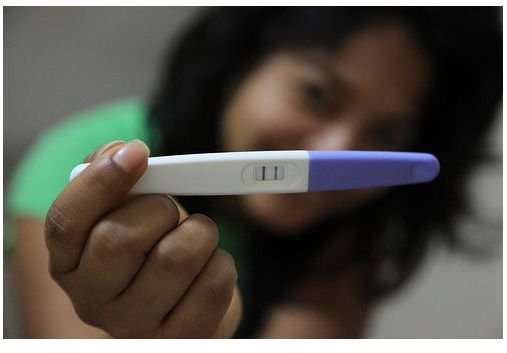Plus, Minus, Dash, Dot — How to Read a Pregnancy Test
Home Pregnancy Tests
Most home pregnancy tests claim to be 99 percent accurate — when used and read correctly. How a pregnancy test works is by detecting the presence in the urine of human chorionic gonadotropin (HCG), a hormone that is produced after a fertilized egg attaches to the lining of the uterus.
A dipstick is held under the urine stream or submerged in a cup of collected urine for several seconds. Within a minute or two a symbol appears on the dipstick’s indicator telling you if you are pregnant or not. Knowing how to read a pregnancy test correctly at this point is the final step for answering the big question with a 99 percent or less accurate ‘yes’ or ’no’. What do the symbols mean on some of the most popular brands available over the counter?
First Response Early Result for Sensitivity
In a test conducted at the University of New Mexico of 18 different brands, First Response Early Result was the most sensitive to the presence of HCG. It was also the only test that was likely to be able to test accurately on the first day of a missed period. Whether it can give a correct reading before a missed period as the product claims may or may not be the case depending on the hormone levels of the individual, but it certainly ranks as one of the more sensitive brands on the market.
How to read a First Response test? After waiting up to three minutes either one or two lines will appear. One line indicates that you are not pregnant (and that the test is working, if no lines appear the test is faulty). Two lines indicate that you are pregnant. What if one line is darker than the other? With this home pregnancy test if one line looks faded, but there are still two lines, then you are pregnant.
Clearblue Easy for Digital Clarity
While First Response may provide one of the most sensitive readings, valuable for women who want to do a test as early as possible, Clearblue Easy is the easy-to-read brand on the market. It provides a digital reading that very clearly says ‘pregnant’ or ’not pregnant’ on the dipstick’s display monitor. This can be very helpful if potentially unclear lines and symbols are not your cup of tea. It even provides a little hour glass icon to show you that the test is working.
EPT for Options
EPT is another popular home pregnancy test. Like Clearblue easy, it claims to be as much as 99 percent accurate when used on the first day of a missed period. This brand offers two different products. Their standard pregnancy test uses a plus or minus sign to indicate pregnancy. A plus means pregnant, a minus means not pregnant.
EPT Digital is similar to the digital Clearblue Easy dipstick. After holding the absorbent tip in the urine stream for several seconds or dipping in a container of clean urine the digital monitor will show a ’test ready’ icon for about thirty seconds while the test is processing. A reading will show the words ‘pregnant’ or ’not pregnant’ which indicate, respectively, that you are pregnant or not pregnant.
Fact Plus
The Fact Plus home pregnancy test does claim to give an accurate reading when done before your period is expected to start, although it is also possible that you will see a negative misreading. Accuracy for four days before your missed period is 53 percent, for three days before is 74 percent, for two days before is 84 percent, and for one day before is 87 percent. The bottom line is for any home pregnancy test, if you are pregnant more of the HCG hormone will be present once you have missed your period, therefore you will have a more accurate reading if you wait a few more days.
This dipstick will show one control line to indicate that the test is working. In an adjacent window a blue minus line will appear if you are not pregnant. If you are pregnant a blue plus sign will appear next to the control window. As with the other non-digital tests, a faded line is still a line.
Reading Tips
There are a few things to keep in mind when reading a pregnancy test. First, tests are more accurate when there is a greater presence of the HCG hormone. More of the hormone will be present after you have missed your period. Testing one week after the first day of your missed period is the best time to get an accurate reading. If you test beforehand and get a negative result, be sure to test again later.
Testing in the morning when you wake up is another way to ensure a higher level of HCG in the urine. If a test doesn’t work because no control line appears or in the case of a digital test because no words appear, then you will have to use another test and try again. If you are unsure because of a faded line or because you waited too long to read the results (more than ten minutes), you will have to use another test to try again.
Knowing how to read a pregnancy test is important. Each brand offers a different method for interpretation, although they all work in the same way. Home pregnancy tests offer easy access to a relatively accurate answer to a very important question. They should not be considered a final determining tool however. If you read positive results, now it is time to visit your doctor to be tested. If you read a negative result, consider when you took the test and the possibility that the reading was not accurate.
References
Mayoclinic https://www.mayoclinic.com/health/home-pregnancy-tests/PR00100
Baby Center https://www.babycenter.com/0\_home-pregnancy-tests\_2029.bc?page=2
First Response Reading Results https://www.firstresponse.com/earlyResultInsert.asp#ReadingtheResult
Clearblue Easy https://www.clearblueeasy.com/clearblue-easy-digital-pregnancy-test.php
EPT https://www.testaccurately.com/aboutpregnancy
Fact Plus https://factplus.com/how\_to\_use.php
photo by Esparta Palma (CC/flickr) https://www.flickr.com/photos/esparta/4482887906/
